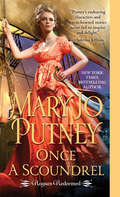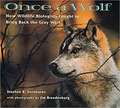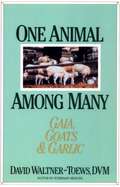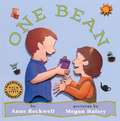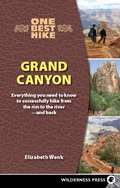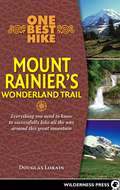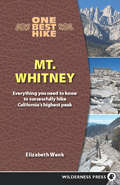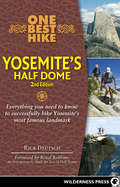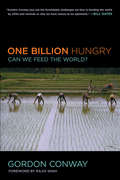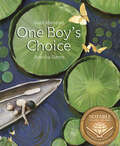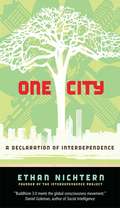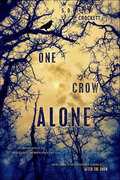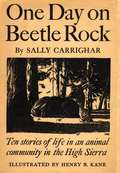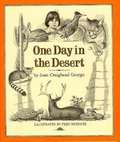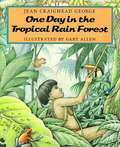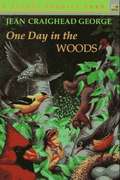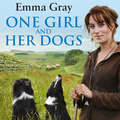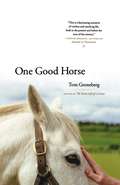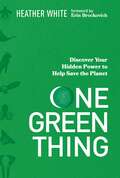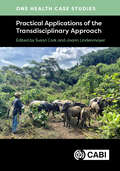- Table View
- List View
Once a Scoundrel (Rogues Redeemed #3)
by Mary Jo PutneyA sea captain rescues an aristocratic beauty from Barbary pirates in a Regency romance that &“sizzles with passion&” by the New York Times bestselling author (Publishers Weekly). Dismissed from the Royal Navy for a rebellious act of heroism, Gabriel Hawkins is now the captain of his own ship. Having earned his living on the high seas as a blockade runner, he is now employed to rescue Lady Aurora Lawrence, who is being held captive on the Barbary coast. The pirate Malek Reis demands a small fortune in ransom, but he&’s dealt with Captain Hawkins before—and knows to expect the unexpected. Lady Aurora is truly shocked when the handsome, steely captain refuses to pay the ransom, and instead agrees to take her and her captor on an even more dangerous mission. But soon Gabriel and Aurora face another kind of danger—an attraction that burns hot within the confines of his ship. Now, even as they endure the perils of the sea, they wonder if their love can survive a return to England, where the distance between a disgraced captain and an earl&’s daughter is wider than the ocean.
Once a Wolf: How Wildlife Biologists Fought to Bring Back the Gray Wolf (Scientists In The Field)
by Stephen R. Swinburne Jim BrandenburgWith powerful and rare photographs by Jim Brandenburg, Once a Wolf explores the long, troubled relationship between humans and wolves. The book traces the persecution of the wolf throughout history and also reveals the role scientists have played in wolf preservation. The work of scientists can often seem mysterious and intimidating to the nonscientist. No longer! <P><P>Introducing an exciting perspective on the important work of scientists in all areas of research and study. Scientists in the Field show people immersed in the unpredictable and dynamic natural world, making science more accessible, relevant, and exciting to young readers. Far from the research laboratory, these books show first-hand adventures in the great outdoors - adventures with a purpose. From climbing into a snake den with thousands of slithering snakes to tracking wolves, readers experience the thrill of discovering the unknown.
One Animal Among Many: Gaia, Goats & Garlic
by David Waltner-ToewsOne Animal Among Many: Gaia, Goats, and Garlic examines the real-life experiences of creatures great and small. Best known for his witty columns in Harrowsmith, David Waltner-Toews explores the interconnectedness of all life with insight and humour. The collection looks at everything from sheep farming to herbal remedies and rabies.
One Bean (Into Reading, Trade Book #9)
by Anne Rockwell Megan HalseyNIMAC-sourced textbook <P><P>What happens when you plant just one little bean? A fundamental childhood experiment charmingly unfolds in this first science book about planting and observation. <P><P>A perfect balance of simple narration and cheerful, thoughtful three-dimensional paper sculptures just right for the very young, One Bean carefully and joyfully takes the young observer step-by-step through a plant's growth cycle, from planting the bean in a paper cup to the tasty results. <P><P>Created with respect to the developmental needs of the youngest learner, here's a concept book that tips its hat to children's never-ending curiosity about the world around them. <P><P>Lexile Measure: 510L
One Best Hike: Grand Canyon
by Elizabeth WenkOne of the world's most spectacular places, the Grand Canyon annually attracts over 4 million visitors who peer over the edge of the abyss. A smaller number of them trek from the rim to the banks of the Colorado River on one of the nation's best-known hikes. Many of these hikers are inadequately prepared for the rigors of what can be a deadly journey. This indispensable guide describes the most popular route into the canyon - the 16.2 mile round-trip route from the South Rim to the Colorado River. It addresses the many possible hazards (extreme heat, cold, elevation gain/loss of over 9,000 feet), gives advice on physical conditioning, and includes helpful charts, maps, and GPS waypoints for the best rest points. The hike itself is covered mile by mile, with expert coaching and hints along the way. Experienced and novice hikers alike will benefit from its encouraging, can-do approach.
One Best Hike: Mount Rainier's Wonderland Trail
by Doug LorainThis is the only comprehensive guide dedicated to this one classic trail. All alternate routes are also described (unlike the more general mentions in books that include other trails as well). <P><P>Hikers will learn about all the best hidden side trips, discover great planning tips, find out how best to snag one of the coveted permits, and have complete sample itineraries available to help with planning, making this guide indispensable to anyone planning to tackle the Wonderland Trail.
One Best Hike: Mt. Whitney
by Elizabeth WenkThe most popular route to Mt. Whitney's summit is the 22-mile round-trip Mt. Whitney Trail. Although the hike is non-technical, would-be hikers need to be prepared for the altitude, long distance, elevation gain, mountain weather, and other potential dangers. Author and seasoned Sierra hiker Elizabeth Wenk provides the authoritative, step-by-step guide to planning and completing this superb hike with safety advice, insider information, detail, and reassurance found nowhere else.
One Best Hike: Yosemite's Half Dome
by Rick DeutschThis is the only guide for hiking to the top of Half Dome - the signature landmark of Yosemite National Park, CA. It provides a history of the original Indian inhabitants of the area. The unique geological formations are explained. <P><P>The focus of the book is to provide information on safe hiking practices to complete this extremely strenuous hike of 16-miles round trip that is climaxed by a harrowing 400 foot vertical ascent to the top of the 8,842 foot high granite monolith with the aid of a pair or steel cable banisters set at 45 degrees incline. Included is an extensive trail description with photos and narration of 16 points of interest. The author has completed this hike over 30 times and is a recognized expert source of information about the hike. This is not a topographic map intensive guide; rather it tells historical vignettes to interpret the hike so readers identify with events of the mid 1800's. He relates the story of the interaction of the Miwok and Mono Paiute Indians with the hordes of white invaders during California's Gold Rush. The reader is aware of how Yosemite developed after the white man's "discovery." The explanation of how odd geologic formations arose from ancient magma flows provides the reader with an understanding of what happened to the "missing part" of Half Dome. The full day hike up to the top of Half Dome is one of the most popular in the country. It is not easy. The book prepares the reader for the adventure with an extensive discussion of the equipment required, the training needed and a detailed "walk through" of the entire trail. Photographs and descriptions of salient features take the apprehension out of doing the hike. Sections with descriptions of 16-Points of Interest - waterfalls, historical areas, flora and fauna, drinking water sources and the actual cables provide readers with the "real deal" information to safely prepare for and complete this "bucket list" Adventure. Readers are given specific information on the gear needed. This includes a boots/foot care, use of hiking poles and a summary of water filter usage clothing selection and food suggestions.
One Billion Hungry: Can We Feed the World?
by Gordon ConwayHunger is a daily reality for a billion people. More than six decades after the technological discoveries that led to the Green Revolution aimed at ending world hunger, regular food shortages, malnutrition, and poverty still plague vast swaths of the world. And with increasing food prices, climate change, resource inequality, and an ever-increasing global population, the future holds further challenges. In One Billion Hungry, Sir Gordon Conway, one of the world's foremost experts on global food needs, explains the many interrelated issues critical to our global food supply from the science of agricultural advances to the politics of food security. He expands the discussion begun in his influential The Doubly Green Revolution: Food for All in the Twenty-First Century, emphasizing the essential combination of increased food production, environmental stability, and poverty reduction necessary to end endemic hunger on our planet. Conway addresses a series of urgent questions about global hunger: - How we will feed a growing global population in the face of a wide range of adverse factors, including climate change? - What contributions can the social and natural sciences make in finding solutions? - And how can we engage both government and the private sector to apply these solutions and achieve significant impact in the lives of the poor? Conway succeeds in sharing his informed optimism about our collective ability to address these fundamental challenges if we use technology paired with sustainable practices and strategic planning. Beginning with a definition of hunger and how it is calculated, and moving through issues topically both detailed and comprehensive, each chapter focuses on specific challenges and solutions, ranging in scope from the farmer's daily life to the global movement of food, money, and ideas. Drawing on the latest scientific research and the results of projects around the world, Conway addresses the concepts and realities of our global food needs: the legacy of the Green Revolution; the impact of market forces on food availability; the promise and perils of genetically modified foods; agricultural innovation in regard to crops, livestock, pest control, soil, and water; and the need to both adapt to and slow the rate of climate change. One Billion Hungry will be welcomed by all readers seeking a multifacted understanding of our global food supply, food security, international agricultural development, and sustainability.
One Boy's Choice: A Tale of the Amazon
by Sueli MenezesA National Council for the Social Studies - CBC Notable Trade Book! On the bank of a river in the Amazon, a boy learns from his grandfather about a father fish that cares for his offspring, and the importance of preserving the species for future generations.A little boy of the Amazon is excited to go on his first fishing trip with his grandad. He wants to catch the biggest fish! After hours of drifting among the water-lilies, at last they capture a huge Arowana. But, as Grandad explains, sometimes catching the biggest fish isn't the best way to preserve the river's bounty. This is a story of environmental awareness that also touches on fatherhood and the importance of living in harmony with nature. Perfect for our times.
One City
by Ethan NichternWhat you wear. What you say. What you think/ignore/buy/don't buy... Welcome to One City-Population: Everyone-where EVERYTHING you do matters. You've lived here your whole life, whether you know it or not. Ethan Nichtern, the charismatic and creative force behind New York's upstart Interdependence Project is your guide to the beauty that is everywhere in the urban jungle-in the rattling of subway trains, the screechings of traffic, the hum and drone of millions scurrying for work, food, sustenance, art, culture, and meaning. There may be no greater setting for exploring the great truth that Dr. Martin Luther King Jr. expounded: "Whatever effects one directly, effects all indirectly." One City melds Dr. King's message with modern Buddhist wisdom to offer a new way of understanding what binds us all together-no matter where we are, no matter who. With its pop-culture savvy, humor, and literary liveliness, One City will speak to--and even, it's fair to say, help define--the spiritually-inclined, conscious Next Generation.
One Cowboy's Roundup: Prairie Poetry & Proverbs
by Ham HamiltonDoggie Diner The big dog was white-eyed and spotted and he showed a wide streak of mean, he wouldn't back off from anything, he was a tough cow man's dream, he would often sit on his haunches, shifting weight between his front feet, anything moving was seen as a meal, and that dog had appetite for red meat, he was owned by a grouchy old rancher, who grubbed a living best as he could, a man married to a big hearted woman, who "made do," as a good woman should, they didn't have much that was fancy, no rug ever covered their floor, dishes were plain, table was sparse; poverty seemed parked at their door, but they never whined about being poor, they shared what little they had. keeping feed for that dog was a chore, he often ate meat that went bad. it wasn't that they had so much meat, but that the dog killed now and then, it was easier to hang up the kill, than to try to keep the dog in a pen. so along comes a stranger one evening as chores were done for the day. and he wants some rest for his mount, and somewhere his body can lay. the woman offers to share supper, too. she warned that it wouldn't be much, he was warmed by the offer of food, and by her hospitality, touched. the dog knew that his feed would shrink and hunger would tug at his guts. he gave a white stare at the stranger that portended of ill from the mutt. .... supper was set to the big pine board, a large bowl and a spoon for each one. two utensils apiece was all that set out, for of anything else, they had none. The stranger tried to be patient, calm, keep frayed nerves under control, but seeing that dog shift on his feet kept his mind from appointed bowl, the dog rotated his stares, and shifts; the discomforted man gave a jerk; grumpy old rancher swore at the dog, which ducked it's head as it shirked, all was quiet at the table for a moment, but saying relaxed would be lies. man and beast were competing for food in country where the hungry one dies, talk picked up as they emptied their bowls and the men and woman conversed, about what was the country's goings-on and what was gettin' better, or worse, but the big dog showed his nervousness and unsettled the stranger some, the dog was now crowding his elbow And the growling got him undone. ...
One Crow Alone (After the Snow)
by S. D. CrockettA new Ice Age is descending. . . .Food is expensive. Fuel is rationed. People are hungry, cold, and desperate.Living in an isolated Polish village with her grandmother, fifteen-year-old Magda Krol has no idea of the troubles sweeping across the planet. But when her village is evacuated without her, Magda must make her way alone across the frozen wilderness to Krakow, and then on to London, where she dreams of finding warmth and safety with her long-lost mother. In One Crow Alone, the prequel to After the Snow, S. D. Crockett turns back the clock to follow practical Magda (Willo's stepmother) through a world of growing lawlessness, hunger, brutality, and fear.
One Day On Beetle Rock
by Sally CarrigharAn elegant and lively depiction of nine animals spending a spring day on Beetle Rock, a large expanse of granite in Sequoia National Park, One Day on Beetle Rock is a classic of American nature writing. Drawing on seven years of close observation and inspired by the work of natural scientists, Sally Carrighar wrote with exquisite detail, bringing readers to an exhilarating consciousness of the search for food and a safe place to sleep, the relationship between prey and predator, and the marvelous skills and adaptations of nature.
One Day in the Alpine Tundra
by Jean Craighead George"An hour after sunrise on August 16th, a huge slab of rock slipped. It lay at 10,000 feet on the top of Rendezvous Mountain in the Teton Mountains of Wyoming. It had been cracking in the heat and cold for centuries, and now on August 16th at 7:20 A.M. was poised to fall. ... Below, on the fall line of the slab of rock, Johnny Moore was sleeping in his mountain tent in the grass of a meadow. ..." Other books by this author are available in this library.
One Day in the Desert
by Jean Craighead GeorgeExplains how the animal and human inhabitants of the Sonoran Desert of Arizona, including a mountain lion, a roadrunner, a coyote, a tortoise, and members of the Papago Indian tribe, adapt to and survive the desert's merciless heat.
One Day in the Prairie
by Jean Craighead GeorgeHenry photographs animals in a wildlife refuge and also survives a tornado. For grades 4-6.
One Day in the Tropical Rain Forest
by Jean Craighead GeorgeThe future of the Rain Forest of the Macaw depends on a scientist and a young Indian boy as they search for a nameless butterfly during one day in the rain forest.
One Day in the Woods
by Jean Craighead GeorgeRebecca discovers many things about plant and animal life when she spends the day in Teatown Woods in the Hudson Highlands of New York looking for the ovenbird.
One Giant Leap
by Jackie Urbanovic Pam Hirschfeld Katherine FollettPerform this script about a live report from NASA Mission Control as it follows the Apollo moon landing in 1969.
One Girl And Her Dogs: Life, Love and Lambing in the Middle of Nowhere
by Emma GrayEMMA GRAY'S NEW BOOK 'MY FARMING LIFE' ('A HEARTWARMING TALE OF LIFE ON THE LAND' Alan Titchmarsh) IS OUT NOWWhat happens when you swap 'I do' for pastures new?When twenty-three-year-old shepherdess Emma Gray breaks off her engagement, the chance to take over an isolated Northumberland farm seems just the fresh start she needs. But while the beautiful scenery certainly offers plenty of scope for contemplation, a night out with an eligible bachelor soon seems more remote than the farm itself. And once you add fugitive sheep and freak blizzards into the mix, Emma's dreams of a happy future at Fallowlees Farm quickly begin to fade.Throughout the long nights of lambing, the highs and lows of the local sheepdog trials and the day-to-day chores of maintaining a large, ramshackle farm, Emma's collies are her most loyal companions. With Bill, Fly, Roy and Alfie by her side, she'll never really be alone. Emma's remarkable first year at Fallowlees - the triumphs, the disasters, the heartbreak and the glimmer of romance on the horizon - is an inspiration for anyone who has ever dreamt of changing their life and starting all over again.____________________________________________________________Readers love ONE GIRL AND HER DOGS: 'This is an amazing book, difficult to put down. A must for all thinking of living of the land, or looking to be inspired by a hard working courageous young woman' 'What a little gem of a book, I loved it. Emma has given us a little taste of her life in the remote Fallowlees Farm in Northumberland, her knowledge of lambing is just astonishing to me and her beautiful dogs are amazing, I must admit to shedding a tear now and then, but there was plenty to chuckle at too' 'An admirable book''Very entertaining and readable. A brave girl who made the decision to become a sheep farmer and farm in a lovely and lonely spot''This story is written in such a way that you feel you are actually on the farm and going through the trials too. Wonderful empathy with her dogs and an excellent storyteller'
One Girl And Her Dogs: Life, Love and Lambing in the Middle of Nowhere
by Emma GrayEMMA GRAY'S NEW BOOK 'MY FARMING LIFE' ('A HEARTWARMING TALE OF LIFE ON THE LAND' Alan Titchmarsh) IS OUT NOWWhat happens when you swap 'I do' for pastures new?When twenty-three-year-old shepherdess Emma Gray breaks off her engagement, the chance to take over an isolated Northumberland farm seems just the fresh start she needs. But while the beautiful scenery certainly offers plenty of scope for contemplation, a night out with an eligible bachelor soon seems more remote than the farm itself. And once you add fugitive sheep and freak blizzards into the mix, Emma's dreams of a happy future at Fallowlees Farm quickly begin to fade.Throughout the long nights of lambing, the highs and lows of the local sheepdog trials and the day-to-day chores of maintaining a large, ramshackle farm, Emma's collies are her most loyal companions. With Bill, Fly, Roy and Alfie by her side, she'll never really be alone. Emma's remarkable first year at Fallowlees - the triumphs, the disasters, the heartbreak and the glimmer of romance on the horizon - is an inspiration for anyone who has ever dreamt of changing their life and starting all over again.____________________________________________________________Readers love ONE GIRL AND HER DOGS: 'This is an amazing book, difficult to put down. A must for all thinking of living of the land, or looking to be inspired by a hard working courageous young woman' 'What a little gem of a book, I loved it. Emma has given us a little taste of her life in the remote Fallowlees Farm in Northumberland, her knowledge of lambing is just astonishing to me and her beautiful dogs are amazing, I must admit to shedding a tear now and then, but there was plenty to chuckle at too' 'An admirable book''Very entertaining and readable. A brave girl who made the decision to become a sheep farmer and farm in a lovely and lonely spot''This story is written in such a way that you feel you are actually on the farm and going through the trials too. Wonderful empathy with her dogs and an excellent storyteller'
One Good Horse
by Tom GronebergSince moving west over a decade ago, Tom Groneberg has worked with horses as a trail guide, as a ranch hand, and as the manager of his own ranch in Montana, but he has never owned a really good horse. Until, on an autumn night, in a warm barn under a blanket of snow, Blue is born. Soon, he will belong to Tom Groneberg. "If I had a good horse," writes Tom, "I could give it my life. I could ride it for years. We could grow old together. " So begins this unique American love story about a man and his horse. In straightforward, poetic prose, Tom Groneberg chronicles the early successes and failures of trying to train Blue, earning the animal's trust, and saddling him for the first time. The experience is challenging, but ultimately rewarding for Tom. Through his relationship with the animal, he develops a deeper understanding of the land and his community, and of himself -- as a man, and as a husband and father. In a world in which horses are fast becoming nothing more than warm-blooded lawn ornaments, Tom still believes these animals are important in human lives. At its heart,One Good Horseis about the power of hope, the simple story of a horse and the way people connect with nature and with each other across the generations.
One Green Thing: Discover Your Hidden Power to Help Save the Planet
by Heather WhiteThe climate crisis is the biggest challenge of our time, and we all have a unique role to play. Start here and now with this book. In this revolutionary call to action, unlock your superpower through a daily practice of sustainability.Noted environmentalist Heather White offers an easy-to-follow guide for climate action while brilliantly weaving together warm and funny stories from her childhood in East Tennessee, anecdotes from 20+ years of environmental advocacy, and scenes from parenting two GenZ daughters in Bozeman, Montana. In One Green Thing, White shows you how to contribute to the climate movement through self-discovery – your personality, interests, and strengths.First, you&’ll take the Service Superpower Profile Assessment, which will reveal your special gifts in service to others and the planet. Based on your profile, you&’ll then be equipped to:Begin your adventure with a 21-Day Kickstarter Plan that shares specific actions you can takeUse the Eco-Impact Top Ten—the primary areas that can affect positive, lasting change—to develop an individualized Eco-Action PlanLog the mental health benefits and measure your progress with the Joy TrackerWrite about your journey and your &“why&” for taking action with exercises and journal prompts that encourage you to reflectListen and talk with members of Gen Z about their climate anxietyCommit to being an awesome ancestor for future loved ones as you inspire your family, friends, and community to work toward a regenerative, sustainable world Setting the intention each day to take a small step— a &“one green thing&” to care for the planet--can help ease your eco-anxiety, push the culture toward climate solutions, and create a sense of joy.
One Health Case Studies: Practical Applications of the Transdisciplinary Approach
by Susan Cork and Joann LindenmayerThe One Health Case Studies book is a collection of international case studies showcasing the work of One Health practitioners and their projects. The book explores current areas of One Health, grouped into themes of One Health policy, pests and pathogens, water and the environment, agriculture and food security, and education and community engagement. Looking at a range of different countries, it examines the unique projects being undertaken in Asia, Africa, Oceania, Europe, North and South America and highlights the application of a One Health approach from research conceptualization to policy development and implementation. This book provides an understanding of One Health practice globally through 28 diverse case studies. Each case study is carefully designed with clear aims, expected learning outcomes, and reflective questions to encourage academic mastery and real-world application of knowledge. The book also bridges the gap between theory and practice by offering insights into current One Health best practices, challenges, and opportunities.
